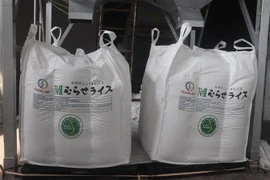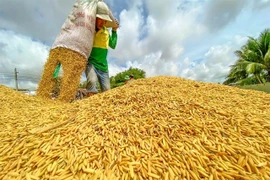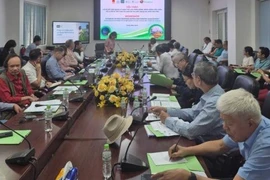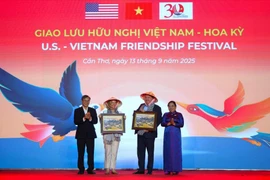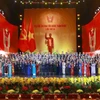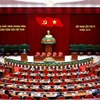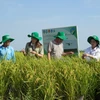Hanoi (VNA) – Vietnam’s rice industry marked a significant milestone on June 5 with the export of the first batch of rice under the brand “Green and Low-Emission Vietnamese Rice” to Japan, one of the most demanding markets in the world.
This achievement goes beyond mere technical or commercial success, it represents a profound shift in agricultural thinking, from traditional production methods to a model that is sustainable, modern, responsible, and climate-resilient. The event sends a strong message: Vietnamese agriculture is moving forward on a green path, a path to the future.
From green production to high-value exports
Vietnamese agricultural products clearing strict technical and quality barriers to reach Japanese dining tables is no longer a rare feat. However, the recent export of 500 tonnes of Japonica rice by Trung An High-Tech Farming JSC in partnership with Japan’s Murase Group carries special significance. What sets this shipment apart is not its variety or quantity but its novel method of production, which is environmentally friendly, greenhouse gas-reducing, and fully traceable.
This success is the first tangible result of Vietnam’s strategic initiative: the “One Million Hectares of Low-emission, High-quality Specialised Rice linked to Green Growth in the Mekong Delta by 2030” (known as the One Million Hectares Rice Project). This policy aims to comprehensively restructure the rice industry, shifting from mass production to high-quality, value-driven cultivation.
As one of the first enterprises granted the right to use the “Green and Low-Emission Vietnam Rice” label, Pham Thai Binh, Chairman of the Trung An High-Tech Farming JSC, emphasised that producing low-emission rice involves more than just changing farming methods. It requires transforming the entire value chain: reducing chemical fertilisers, increasing biological agents, precision water management, eco-friendly harvesting, and especially applying digital technology for monitoring and traceability.
A testament to this green transformation is the export price of the shipment, 820 USD per tonne, significantly higher than the average of 650–700 USD per tonne and on par with Thailand’s premium Hom Mali rice. This clearly proves that green products, if systematically produced, can be positioned in the premium global market. Furthermore, it lays the groundwork for Vietnam to enter agricultural carbon credit trading, a sector currently being developed through the country’s MRV (Measurement, Reporting, and Verification) system, expected to be completed by 2028.
Building momentum for broader impact
Following this promising debut, Vietnam’s rice sector is poised for historic opportunities to scale up sustainable production. By October 2025, an additional 3,000 tonnes of ST25, one of Vietnam’s premium rice varieties certified as low-emission, will be exported to Australia, another market known for stringent quality standards.
However, winning over such high-end markets requires more than just quality grains. It demands a robust, responsible production system from start to finish. According to Binh, the market potential for high-quality, eco-friendly rice is substantial, particularly in the EU, the US, and the Middle East. Yet, these opportunities come with tough requirements: food safety must be absolute, with no pesticide residues, and full traceability must be ensured.
Therefore, building sustainable links among farmers, cooperatives, and businesses is critical to the success of green rice, he stressed.
To ensure that low-emission green rice is not a passing trend but a long-term strategic foundation, Vietnam must undergo a comprehensive transformation from policy to practice. The entire rice production system must be modernised, greened, and internationally standardised. Initially, this means transitioning from traditional methods to modern models using biological fertilisers, reducing methane emissions, and optimising water management. These changes will not only cut emissions but also enhance economic efficiency and product quality, enabling Vietnam to meet the standards of top-tier markets.
Moreover, to effectively implement this model, enterprises must lead in technology and market orientation, while farmers and cooperatives serve as the core producers. Close coordination between these actors, supported by the government, is essential to redesign green-standard production zones, provide green credit for farmers, and invest in internationally compliant logistics and processing infrastructure. Most importantly, Vietnam must build a nationally recognised low-emission rice brand with international credibility.
While technology and market dynamics are vital, Deputy Minister of Agriculture and Environment Tran Thanh Nam underscored the central role of human factors. It is the shift in farmers’ mindsets that has laid the foundation for the early success of the low-emission rice model, he noted.
From previously exploiting the land to maximise yield, today’s farmers are combining efficient use with soil enrichment and natural nutrient development to improve product quality and protect resources. Initially hesitant about reducing fertilisers, adjusting crop schedules, or changing irrigation methods, many farmers have embraced these changes after seeing stable yields, higher prices, and improved incomes. They have become pioneers in low-emission rice production, showing a revolutionary shift in agricultural production thinking./.
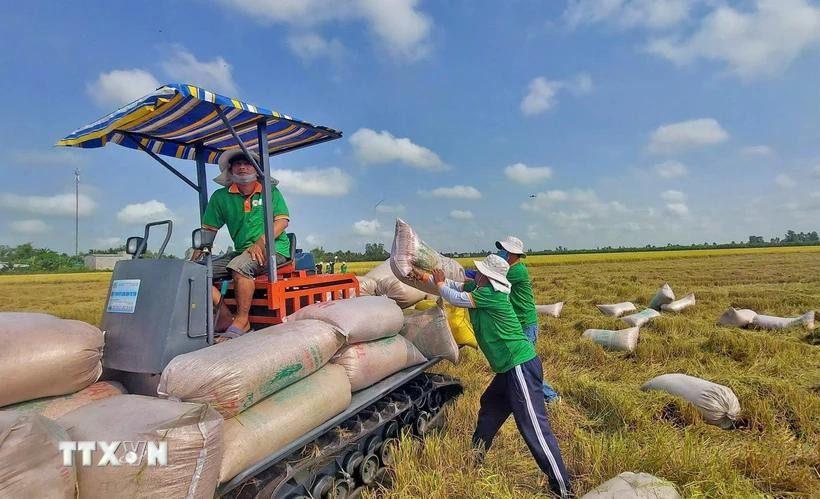
See more
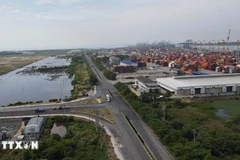
Special mechanisms set to boost investment appeal of HCM City
The resolution provides the key legal framework for advancing the Cai Mep Ha Free Trade Zone (FTZ), attracting strategic investors and supporting economic expansion across the southern key economic region.
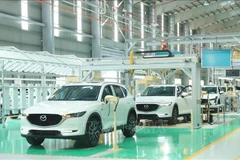
Automobile sector enters new competition phase
2026 should cement trends toward greener mobility, diversified sourcing and value-driven competition, with consumers being the main winners of the transformation.
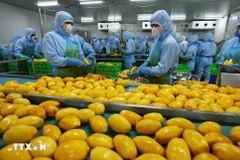
Fruit, vegetable exports post successive breakthroughs
If market discipline is maintained, key produce such as durian, banana, pomelo and coconut are developed under closed value chains, and existing export protocols are effectively utilised, fruit and vegetable export turnover is expected to soon reach 10 billion USD in 2026.
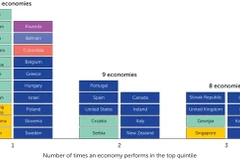
Vietnam ranks among top performers in WB’s Business Ready 2025 report
The Southeast Asian nation secured its position in the first quintile – representing the top 20% globally – in the operational efficiency pillar, which measures how easily businesses can comply with regulations and use public services.
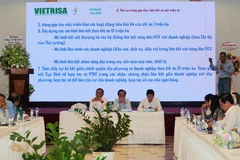
71,000 tonnes of rice get low-emission, green certification
Certified rice must meet traceability requirements covering production areas, varieties and cropping seasons, and comply fully with low-emission, high-quality cultivation protocols.

Argentine journalist hails Vietnam's 2025 stability amid global turbulence
Journalist Gaston Fiorda highlighted Vietnam's sustained macroeconomic stability, effective control of major economic balances, and steadfast pursuit of fast yet sustainable development as the standout features in an increasingly complex global landscape rife with risks and uncertainties.
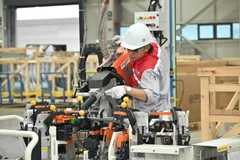
ADB Country Director breaks down Vietnam's 2025 success and 2026 prospects
The ADB official described Vietnam's 2025 results as highly impressive despite global challenges.

Phu Quoc Int’l Airport starts New Year with flight from RoK
Right at the arrivals area, representatives of Phu Quoc International Airport extended a warm welcome along with the very best New Year wishes to all passengers.
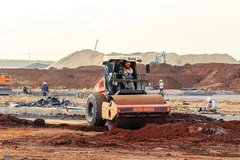
Vietnam targets double-digit growth in 2026 with massive investment push
The National Assembly has targeted 10% GDP growth for 2026, a goal that demands enormous capital inflows.
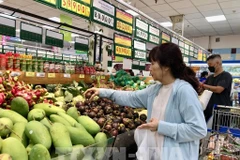
HCM City market reflects cautious, practical Tet spending trends
Shoppers are adjusting their habits in response to ongoing economic uncertainty, opting for a more thoughtful and practical approach to spending compared to previous years.
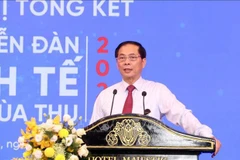
Vietnam aims to elevate Autumn Economic Forum into prestigious annual platform: Deputy PM
The 2025 Autumn Economic Forum, themed “Green transition in the digital era”, had been a success in terms of scale, content and external engagement. It had served as a practical platform for policy dialogue, bringing together policymakers, international organisations, experts and businesses to discuss major global trends, identify emerging challenges and propose policy directions and solutions in the context of green and digital transformation.

VinFast factory rolls out its 200,000th electric car in 2025
This achievement comes after more than a year of VinFast holding its position as the best-selling car brand in the Vietnamese market, creating a significant lead over other automakers.
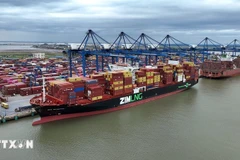
Nearly 500 containers of Vietnamese tea released from Pakistan’s Karachi Port
This decision removes one of the biggest obstacles facing Vietnam’s tea exports in recent times. The outcome was achieved thanks to the close direction of the Prime Minister as well as the persistent and proactive efforts of the Ministry of Industry and Trade through multiple bilateral working channels with Pakistani authorities.
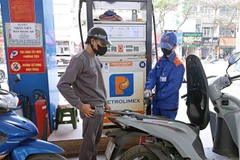
Fuel prices fall on 2025’s last day
E5RON92 petrol is sold at the maximum of 18,438 VND (0.7 USD) per litre, down 278 VND from the baseline price, and RON95-III at 18,917 VND per litre, down 89 VND.
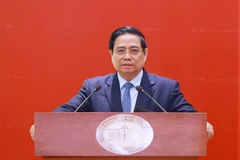
PM hails banking sector’s performance, contribution to national development
The banking sector must make important contributions to macroeconomic stability, inflation control, the promotion of double-digit growth, the safeguarding of major economic balances, and the improvement of people’s material and spiritual lives.

Digital transformation in real estate brokerage: From technology to ecosystem restructuring
As Vietnam's Ministry of Construction calls on trading floors and enterprises to enhance professionalism, we spoke with Nguyen Ly Kieu Anh, CEO of Meey Group, about the role of digital transformation in real estate brokerage.

VNG seeks postponement of Zalo-related meeting with National Competition Commission
VNG explained that the information and documents required for the session involve multiple specialised fields that need additional time to be reviewed and prepared, and that it is currently coordinating and working with other regulatory authorities on related matters.
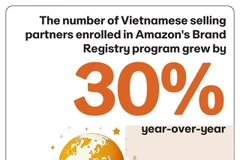
Vietnamese product sales on Amazon surge
The number of branded products sold by Vietnamese selling partners achieved more than 40% growth in sales – demonstrating that brand investment translates directly to business success.
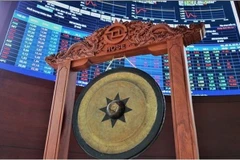
UPCoM listed bank stocks plan to move to HoSE from 2026
The move of shares from UPCoM to HoSE is expected to create more room for the banks to raise capital, improve stock liquidity and enhance information transparency, thereby meeting the higher standards of a centralised stock market.
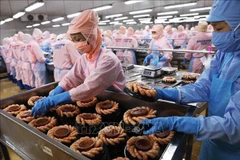
Agriculture-environment sector fulfils, exceeds all nine targets
According to the Ministry of Agriculture and Environment, the sector's GDP growth reached around 3.7-3.92%, while exports of agricultural, forestry and fishery products are estimated at 70 billion USD, far exceeding the target of 65 billion USD and generating a trade surplus of more than 20 billion USD.
